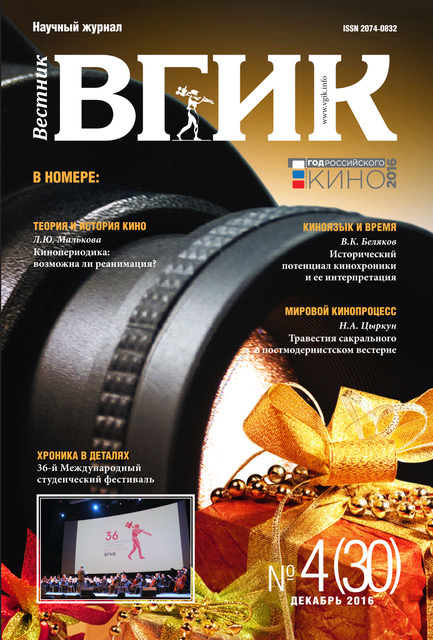The Problem of Artistic Form and the Objectives of Fine Arts Pedagogy
- Authors: Sveshnikov A.V1
-
Affiliations:
- Всероссийский государственный университет кинематографии им. С.А. Герасимова (ВГИК)
- Issue: Vol 8, No 4 (2016)
- Pages: 98-107
- Section: SCREEN CULTURE | CULTURAL STUDIES. PHILOSOPHY
- URL: https://journals.eco-vector.com/2074-0832/article/view/14682
- DOI: https://doi.org/10.17816/VGIK8498-107
- ID: 14682
Cite item
Full Text
Abstract
The widespread tendencies in art to focus on the expression of subjective attitude to an event rather than on accurate depiction of an object have led to an increasingly strong opinion that basic academic literacy has lost its former practicality. Art pedagogic theory often treats the classical and modern education methods as opposites. Traditional education is claimed to be incompatible with the resolution of modern creative questions, and the instruction methods of the past are considered as outdated and unnecessary. Such contradistinction of “the old and the new” fails to consider the existence of a common pillar, of the main illustrative and interpretative objective, which is instrumental in providing the artistic meaningfulness equally to object-based or object-less art forms. The need to establish a necessary common ground, to resolve that universal fundamental problem at the very beginning of any educational journey, becomes therefore overlooked. This author’s argument in favour of the importance of treating such a common objective as a pedagogic cornerstone is based on selected conceptual themes from the works by A. Hildebrand and G. Wölfflin, two classics of art criticism. It is hereby attempted to demonstrate the existence of certain fundamental principles, indispensable for any of the pedagogic schools. In particular, A. Hildebrand pinpointed the importance of the “distance seeing”, which reveals the necessary general identifying impression given by an event or an object, leading to considering them as a whole, uniting all the separate parts of their image. In relation to this global ability classical academic and contemporary schools differ only in their means of expression, and the argument between them appears to have no ground. Such conclusions are in agreement with the stand of G. Wölfflin, a distinguished art historian and critic. In his studies of the historic development of art form from objective clarity to subjective relative clarity of the objective sphere, he showed that we are dealing here with methodological variations rather than with different views on the core pedagogical values. Different schools of art, and both contemporary and traditional approaches to art education have therefore a common ground: forming of a holistic vision of the student. It is important to keep in mind that, depending on their type of artistic thinking, some students would be able to better reach this goal within the framework of the academic school, and others, on the contrary, while mastering modern forms of art.
Keywords
About the authors
Alexander V Sveshnikov
Всероссийский государственный университет кинематографии им. С.А. Герасимова (ВГИК)
Author for correspondence.
Email: sveshnikov@rinet.ru
Doctor of Art Studies, Professor, Full Professor at the Department of Fine Arts, VGIK.
References
- Вёльфлин Генрих. Основные понятия истории искусств. Проблема эволюции стиля в новом искусстве. - М.: Издательство В. Шевчук, 2002. - 344 с.
- Гильдебранд А. Проблема формы в изобразительном искусстве. - М.: Изд-во МПИ, 1991. -137 с.
Supplementary files








